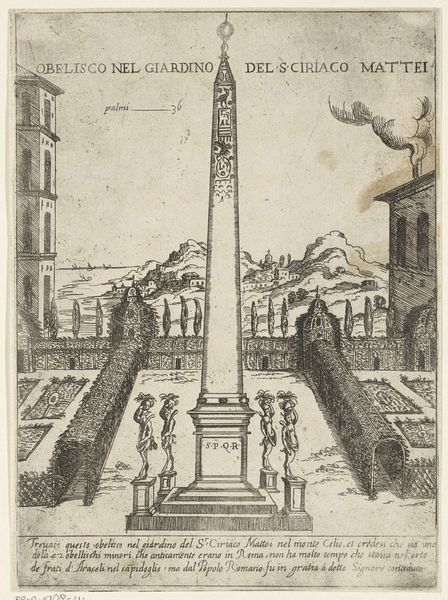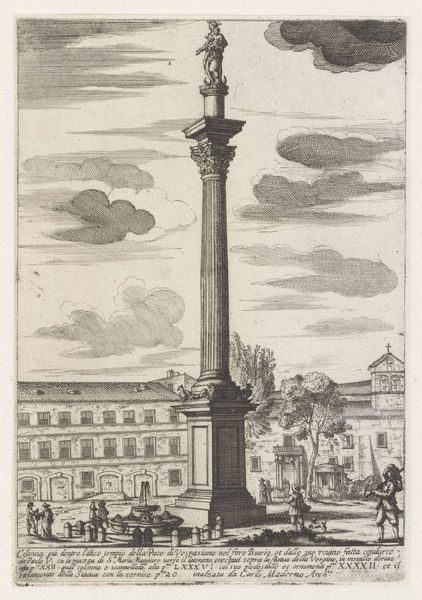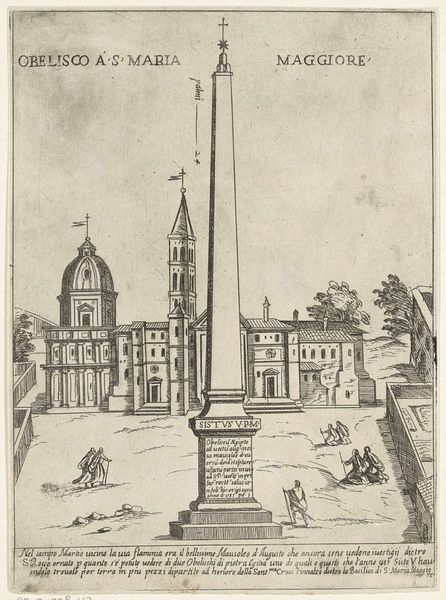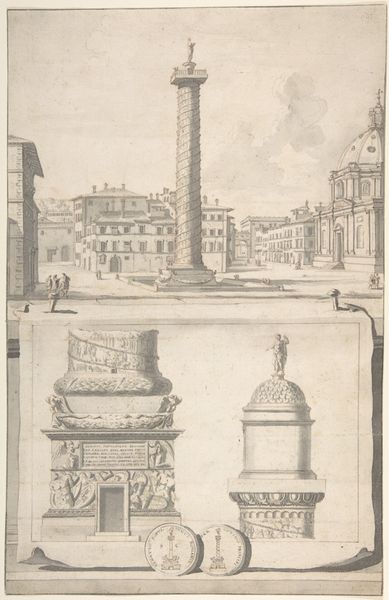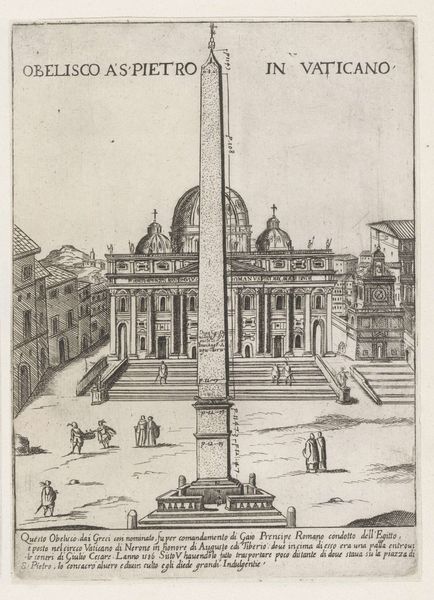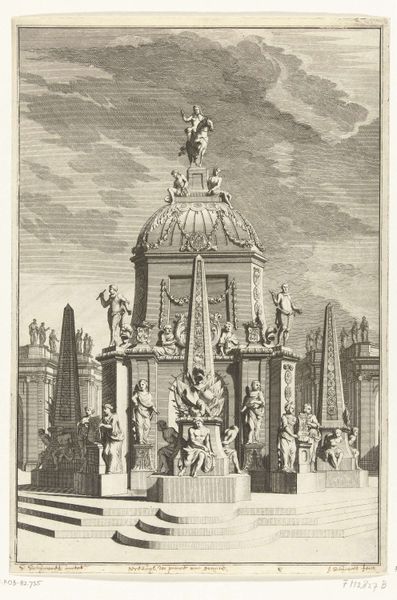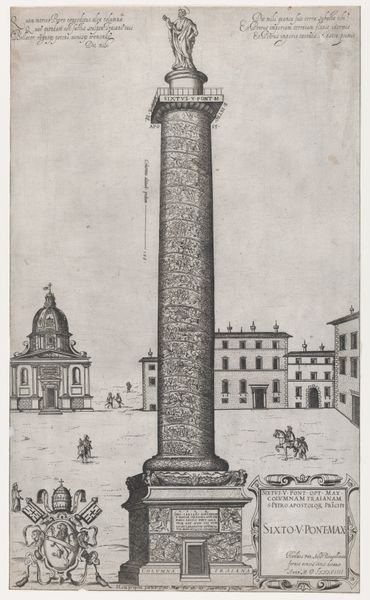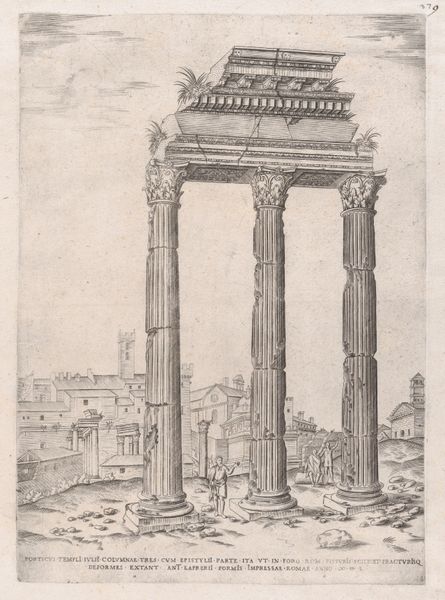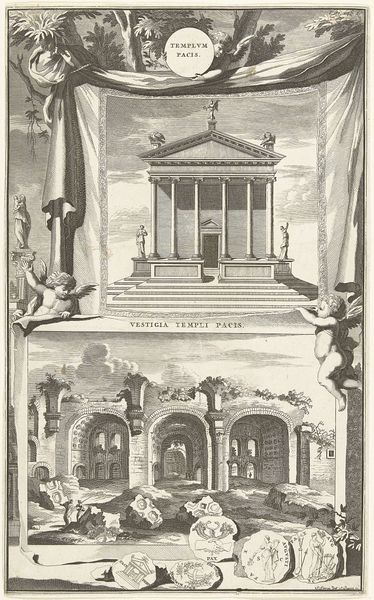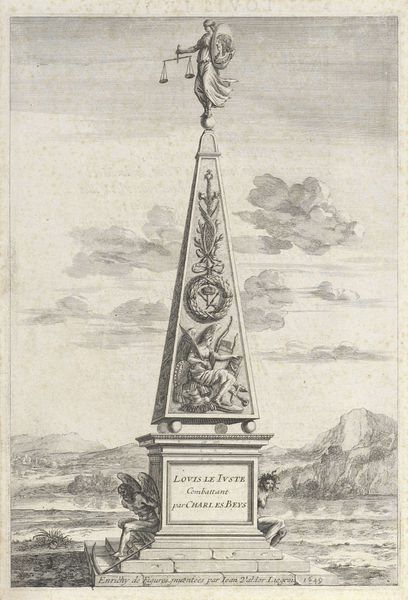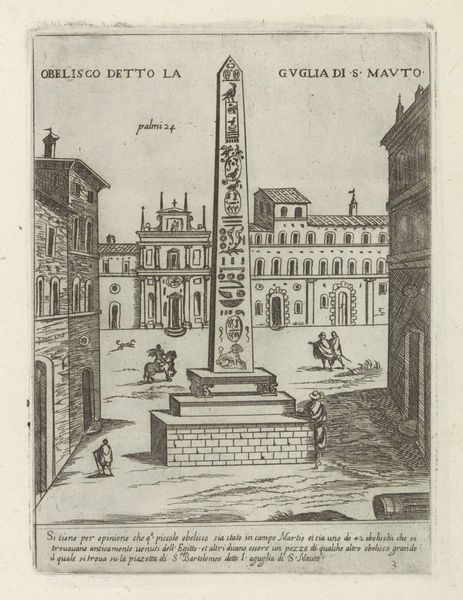
drawing, print, ink, engraving, architecture
#
drawing
#
baroque
# print
#
11_renaissance
#
romanesque
#
ink
#
geometric
#
column
#
pen-ink sketch
#
line
#
cityscape
#
engraving
#
architecture
Dimensions: height 215 mm, width 157 mm
Copyright: Rijks Museum: Open Domain
This engraving of the Zuil van San Antonio was crafted by Giovanni Maggi around the turn of the 17th century. Dominating the scene is a tall column surmounted by a crucifix, symbols of power, faith, and redemption during the Counter-Reformation. Consider the column itself – an ancient symbol of strength and permanence, harking back to antiquity. We see similar columns in Trajan’s Column, celebrating imperial might, yet here, the cross transforms it into a Christian monument, a metamorphosis reflecting the Church's adaptation of pagan symbols. The crucifix resonates deeply, embodying sacrifice and salvation. This echoes the suffering and transcendence found in earlier depictions of crucifixion, a visceral reminder of human frailty and spiritual hope, passed down through generations. The image engages us on a primal level, triggering a subconscious awareness of the cyclical nature of belief and the enduring power of symbols. This convergence of pagan and Christian symbols is a powerful display of cultural memory, with symbols evolving and reappearing through time.
Comments
No comments
Be the first to comment and join the conversation on the ultimate creative platform.
